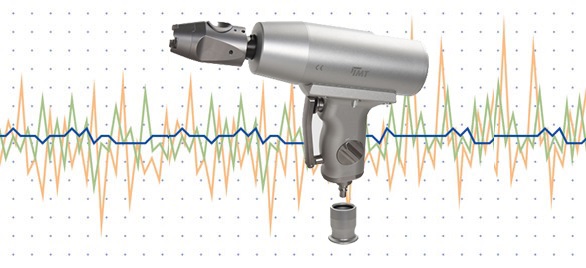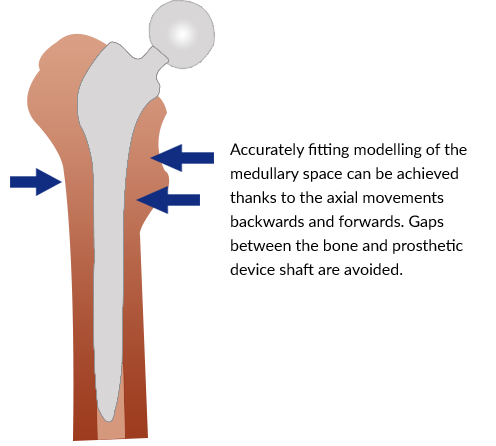
Maximum Precision and an Improved Surgical Technique
Media
The WOODPECKER is successful as a rasp device for prosthetic operations. The high frequency axial impulses of the instrument substantially reduce operating time. At the same time, avoiding a none-physiological build-up of pressure in the bone. The low weight of the instrument and the low force needed to manipulate it virtually rule out user fatigue.The surgeon is therefore able to concentrate entirely on the operatrion, consequently improving precision.

What's great about pneumatic broaching with the woodpecker
OSCILLATION WITH A FREQUENCY OF 70 HZ
Accurate shaping of the femoral canal provides improved fit. Gaps between the bone and the prosthesis are avoided. Non -physiological dilation of the femur, damage to the cortical bone and fissures are minimized substantially. The high-frequency axial impulses of the woodpecker reduce operation time.
Like thousands of other Surgeons have already discoversed,you too will agree that the woodpecker gives you precise control ,yielding consistent results; everytime.
AXIAL FORCE OF NO MORE THAN 1 NEWTON
The extremely low-level impulses of the Woodpecker minimizes hoop stresses and decreases the bone marrow emboli risk. It also minimize the risk of femoral fractures caused by excessive radial forces.
QUICKRELEASE
Broaches or adapters can be oriented in 90 increments to accomodate surgeon prefence or approach . The femur antetorsion can be controlled.
Technical Information
Operating pressure: 7 to 8 bar
(100 to 120 PS)
Total stroke: 10mm (0.3937 Inches)
Oscillation Frequency :70Hz
(70 time per second)
Length:19.6 cm(7.7 Inches)
Weight:2.3 Kilograms (5 Pounds)
The Woodpeaker is a pneumatically
Powered devise and must be operated
at the pressure of 7 to 8 bar (100 to 120 PSI).
Use nitrogen or clean compressed . The air must be free of particles.
For more details please visit www.imt-medical.com
